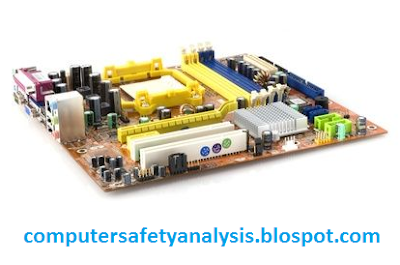Installing the
CPU, and the CPU’s heat-sink and fan, are by far the most difficult steps
you’ll have to complete during your build. Here, more than anywhere else, it
will pay to read the instructions carefully, look at the parts, study the
diagrams that came with your CPU and/or third party cooling solution, and make
sure you thoroughly understand what you are going to do before you try to do
it. During the process, if anything does not seem to fit or make sense, put the
parts down and look things over carefully before you proceed. Some operations,
especially installing the heat-sink/fan combination, can require pretty firm pressure,
so don’t be afraid to push a little harder if you’re sure everything is set up
correctly.
The details of the
installation process differ in slight but important ways for each
manufacturer’s processors, and even within a manufacturer's product line.
Therefore, for these details, you should rely on the instructions that are
provided with the CPU.
If you buy a third party cooling solution for your CPU make sure you
get one that is compatible with the CPU you have. Most brands come with
multiple mounting brackets that will suit many different chipsets, but it is
best to check for compatibility just in case.
If using thermal paste, apply it only to the CPU die (the square piece
of silicon in the middle of the CPU) and do so sparingly -- most modern CPUs
take no more than a dab of thermal paste the size of a grain of rice. Some
people do like to wipe some onto the heat-sink's surface and then wipe it
smoothly off so that bits of it may get into tiny holes for better heat
transfer.
One option you may consider, before installing the heat-sink, is to
"lap" the heat-sink, which means to smooth out the bottom surface. To
do this, you will need a very flat surface; a piece of thick window glass will
work. Fasten your sandpaper on the flat surface, invert the heat-sink on the
sandpaper and sand in small circles, applying minimum pressure. If you get it
right, you should have a surface which feels completely smooth to the touch with
a mirror finish. Some companies producing heat-sinks lap the surface
themselves, so if the surface already looks like a perfect mirror, leave it
alone. A lapped heat-sink is more effective as it will have better surface
contact with the chip.
Tighten the cooler using only the specified holding devices - if you
did everything right, they will fit. If they do not fit, check your setup -
most likely something is wrong. After mounting the cooler, connect any power
cables for the fan that is attached to the cooler.
Incoming Search Tearms
cpu
Assembling cpu
How to assemble cpu










